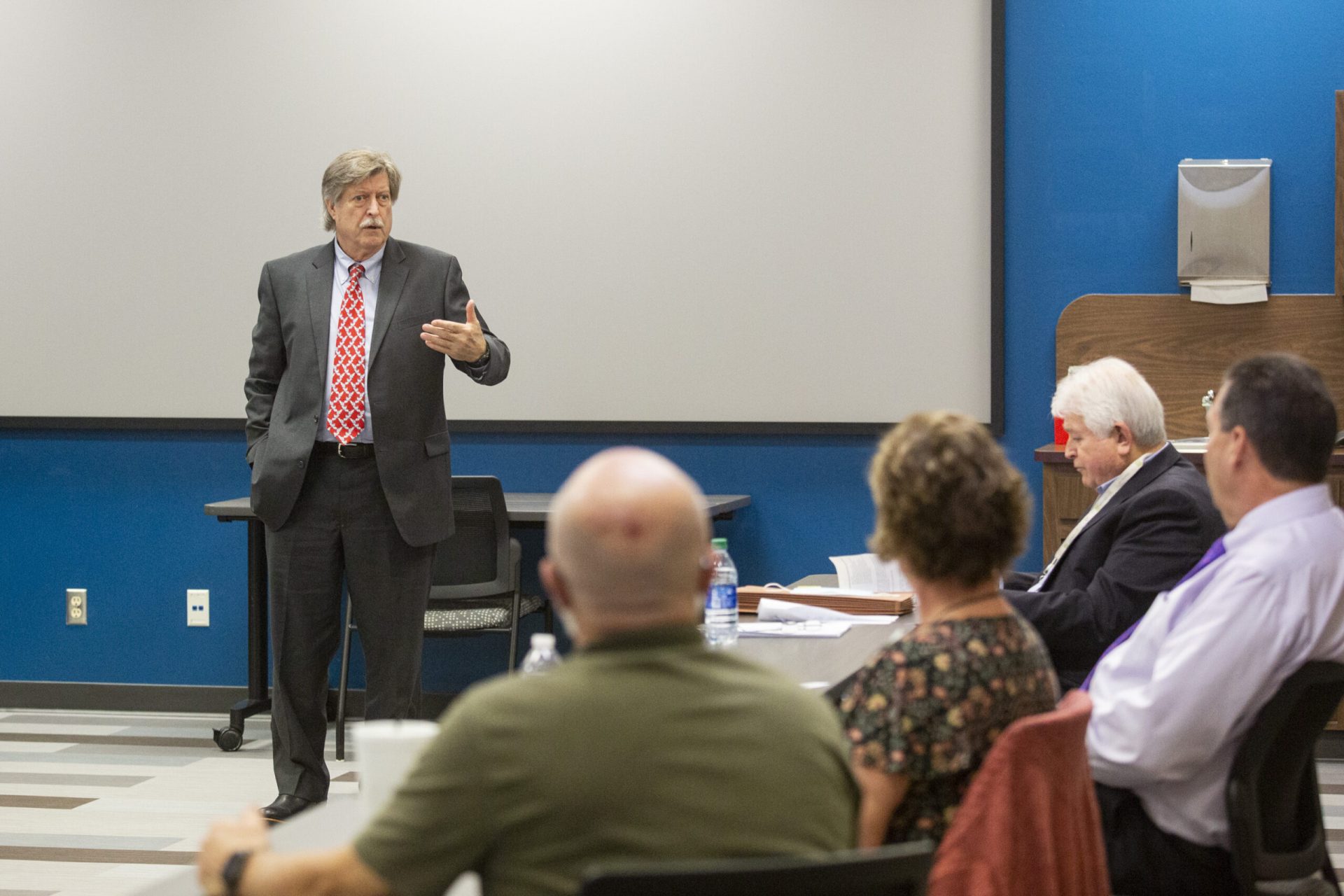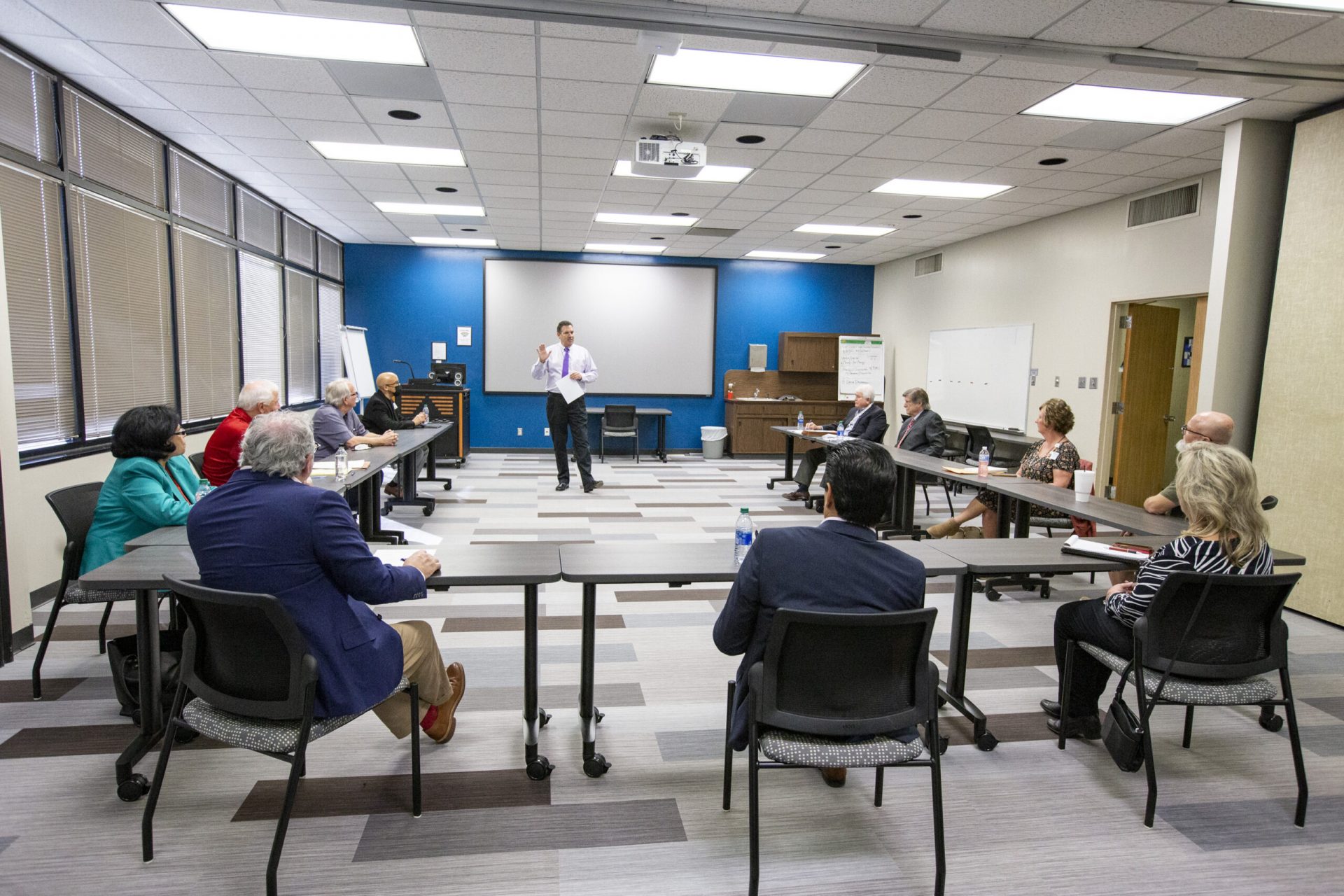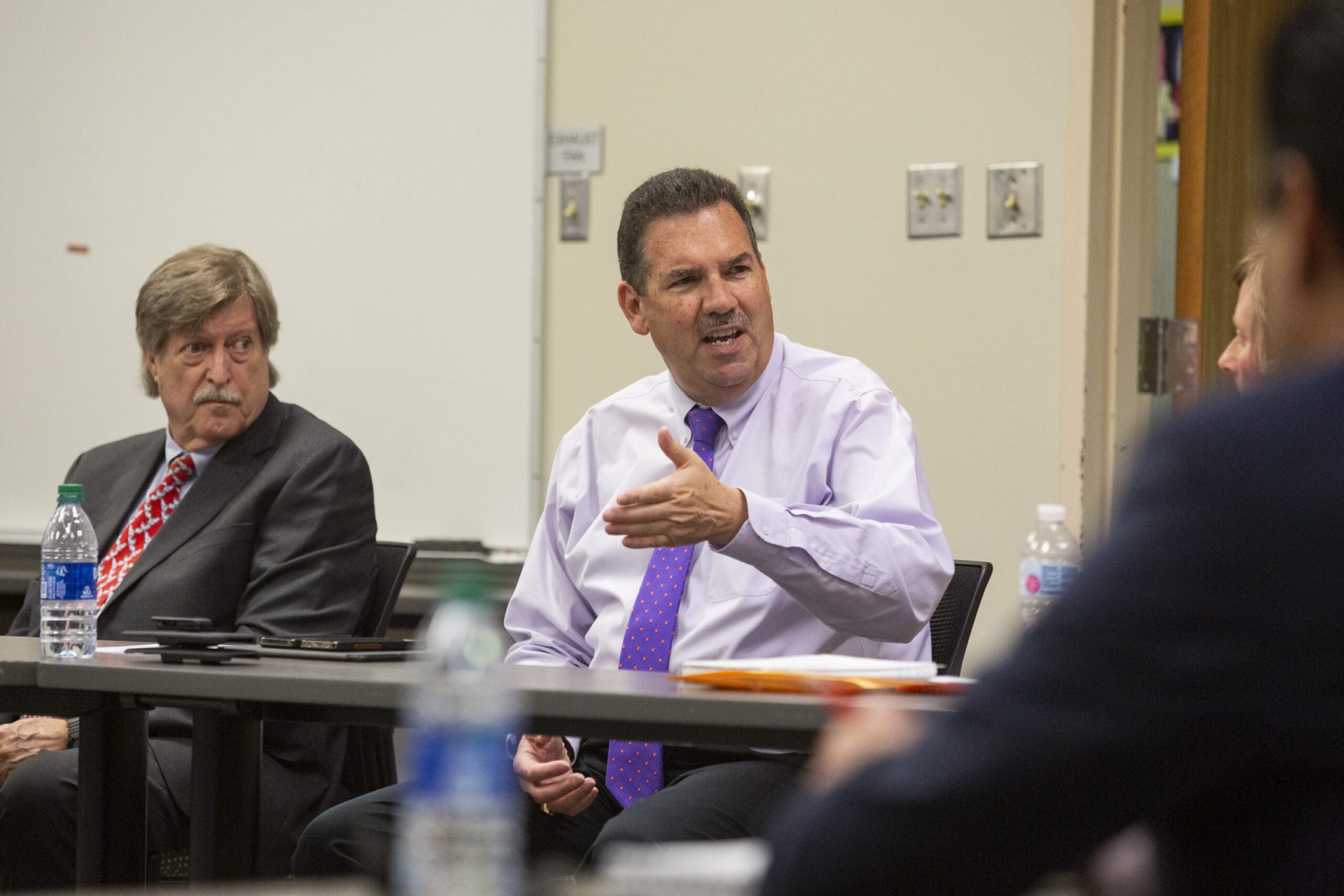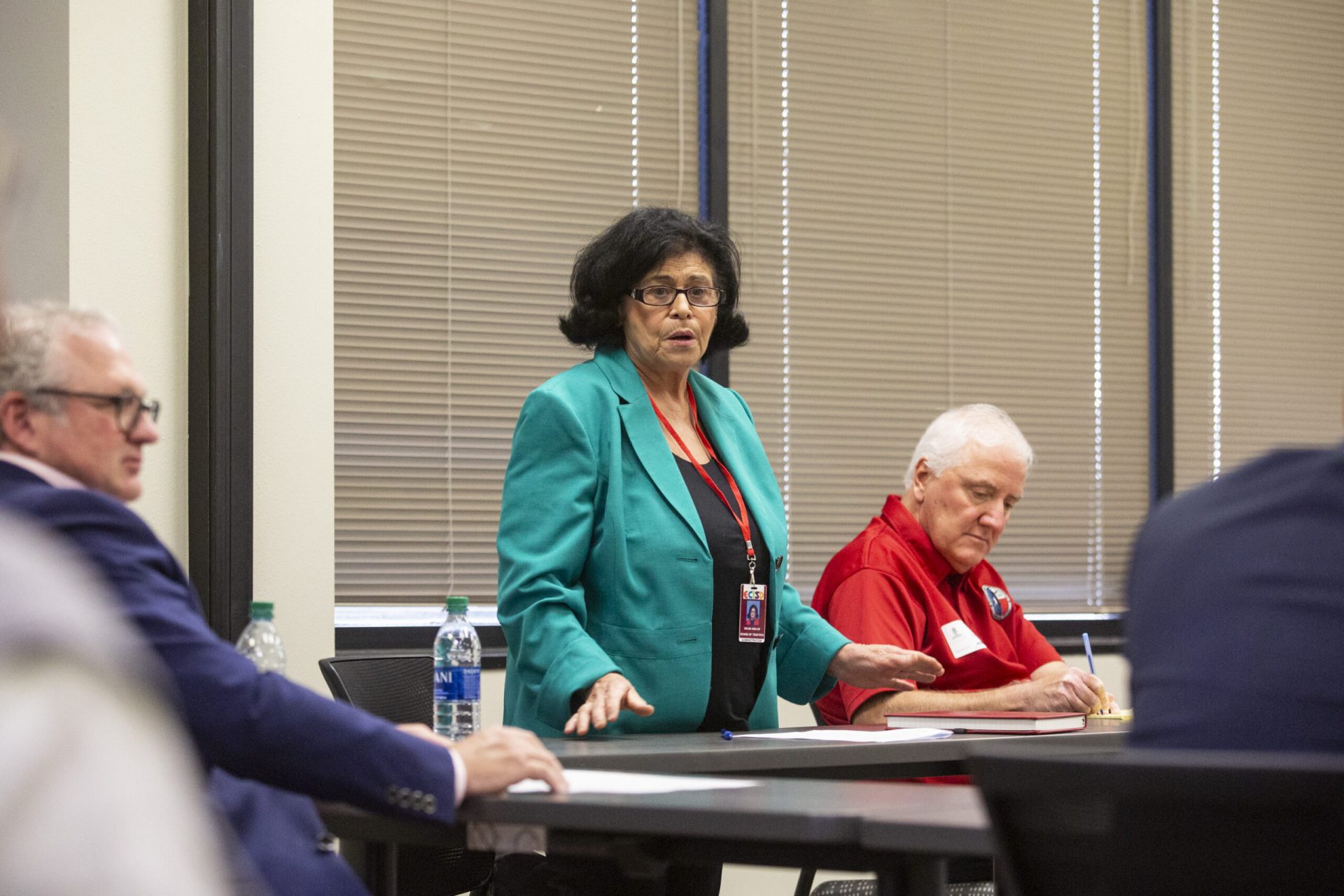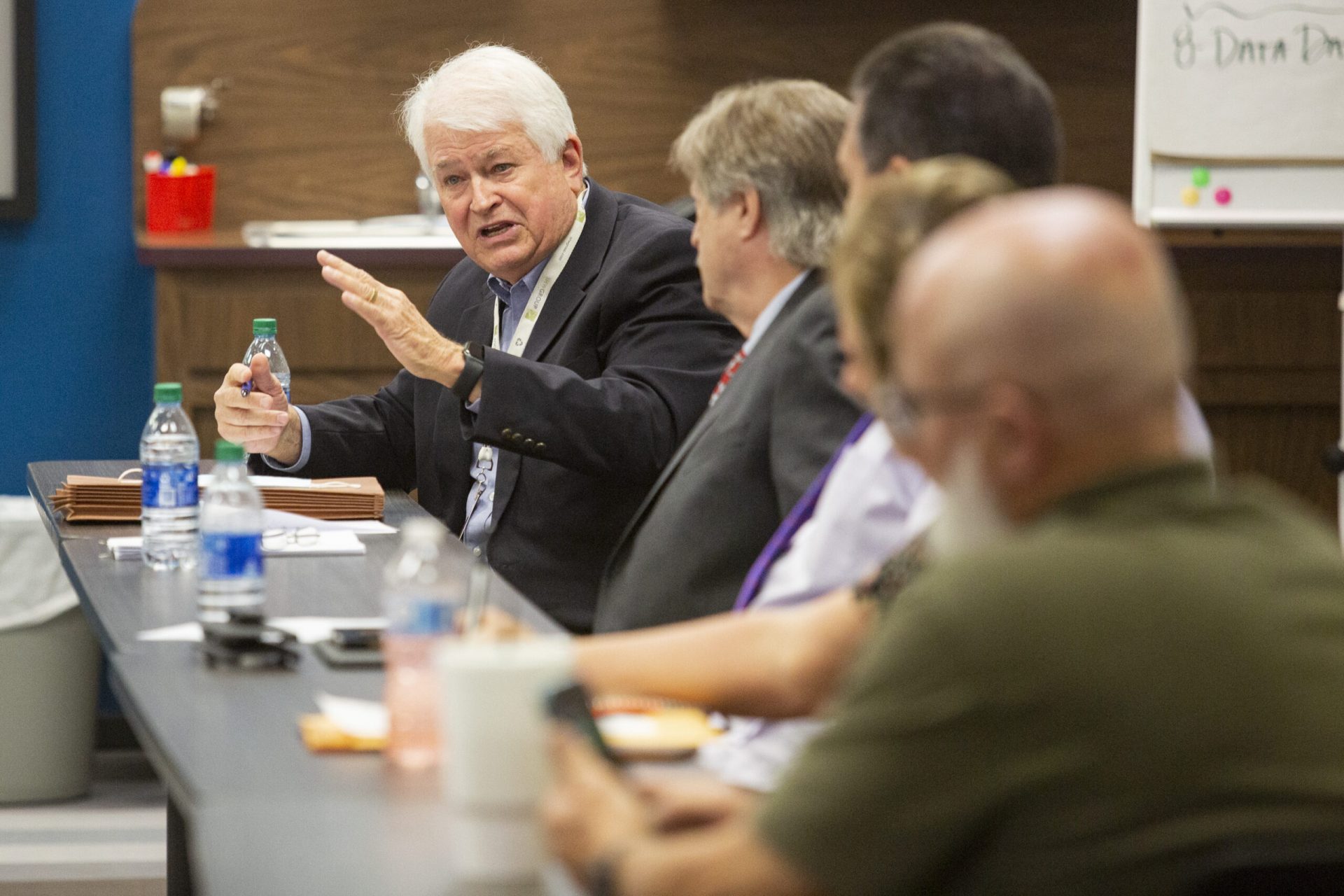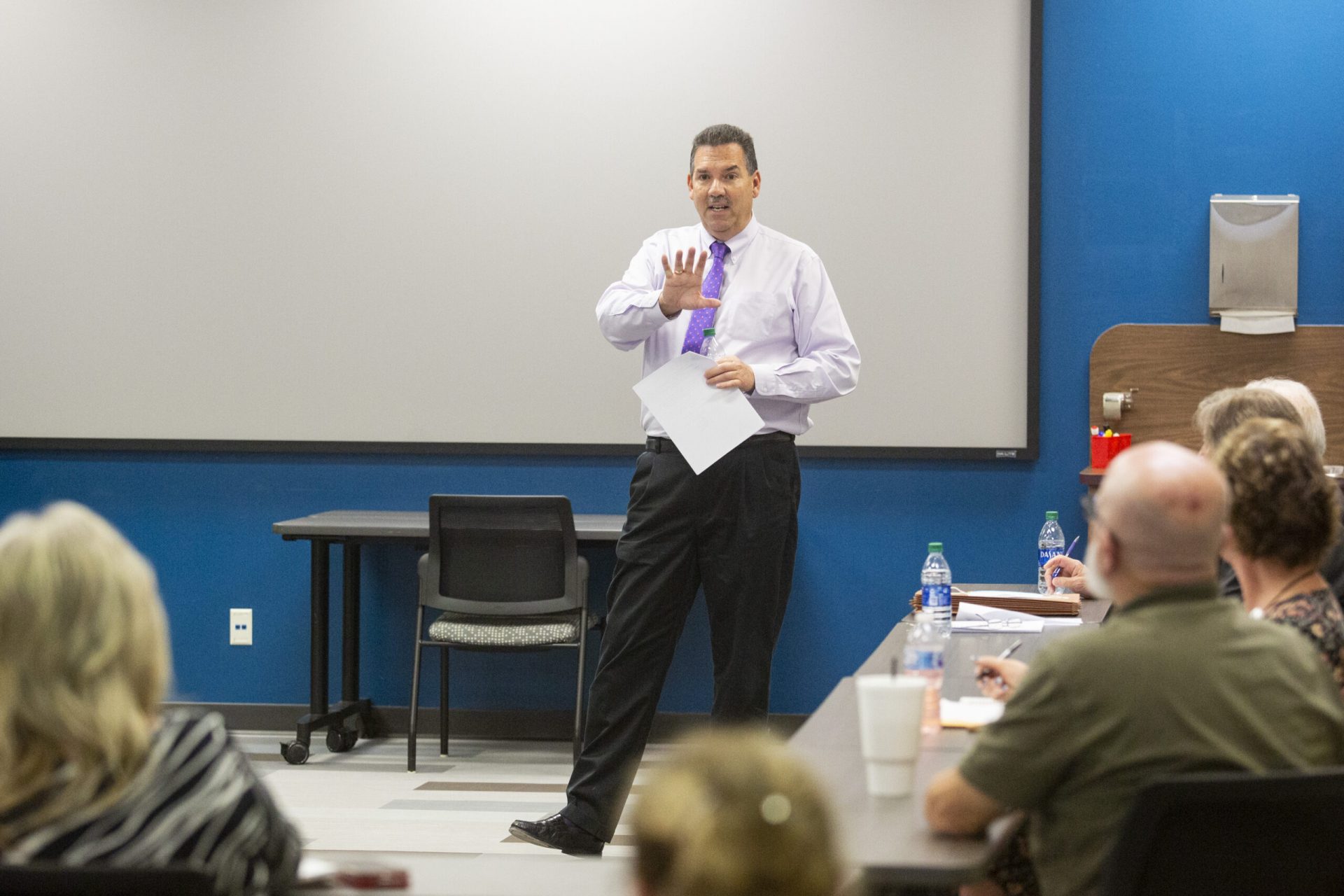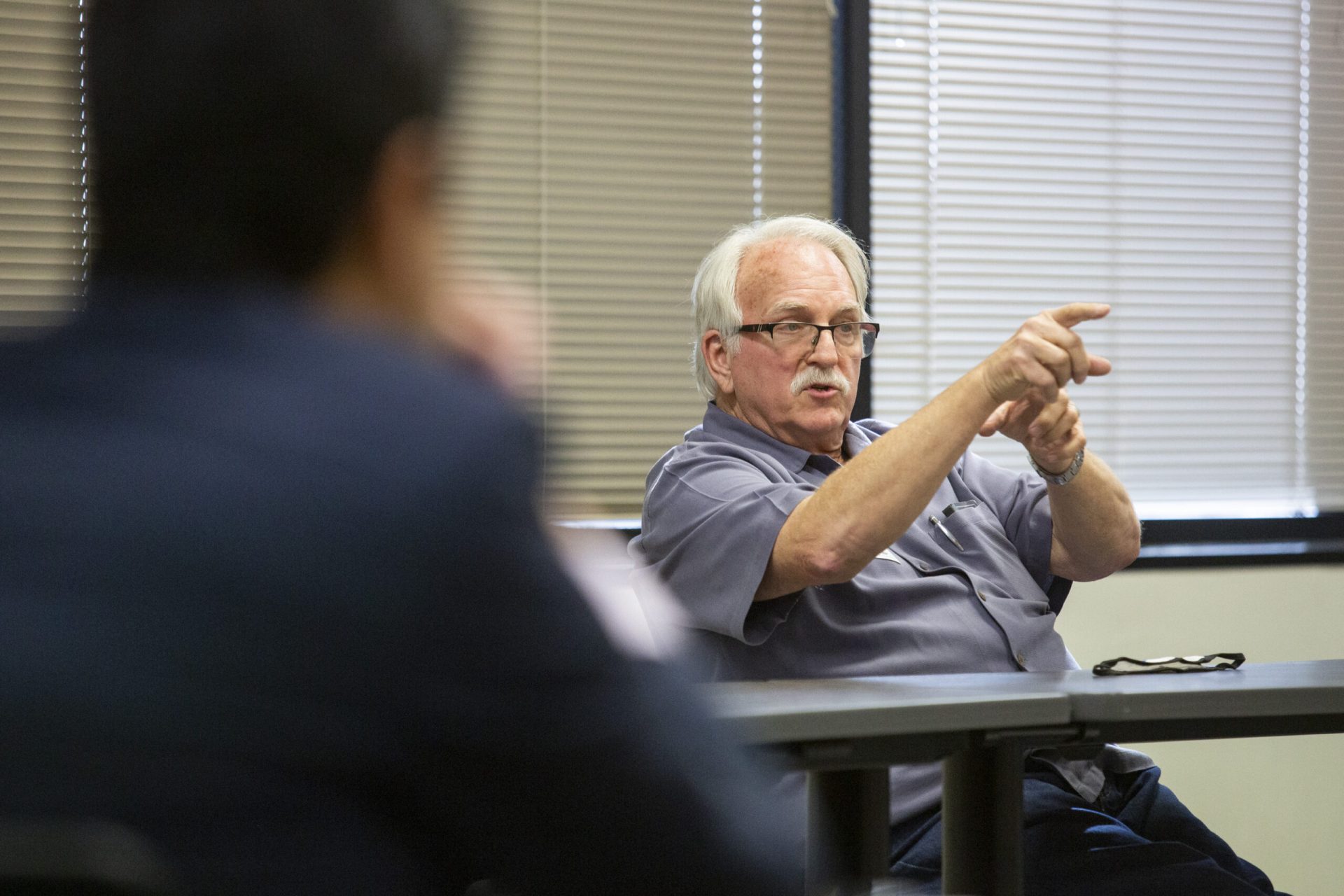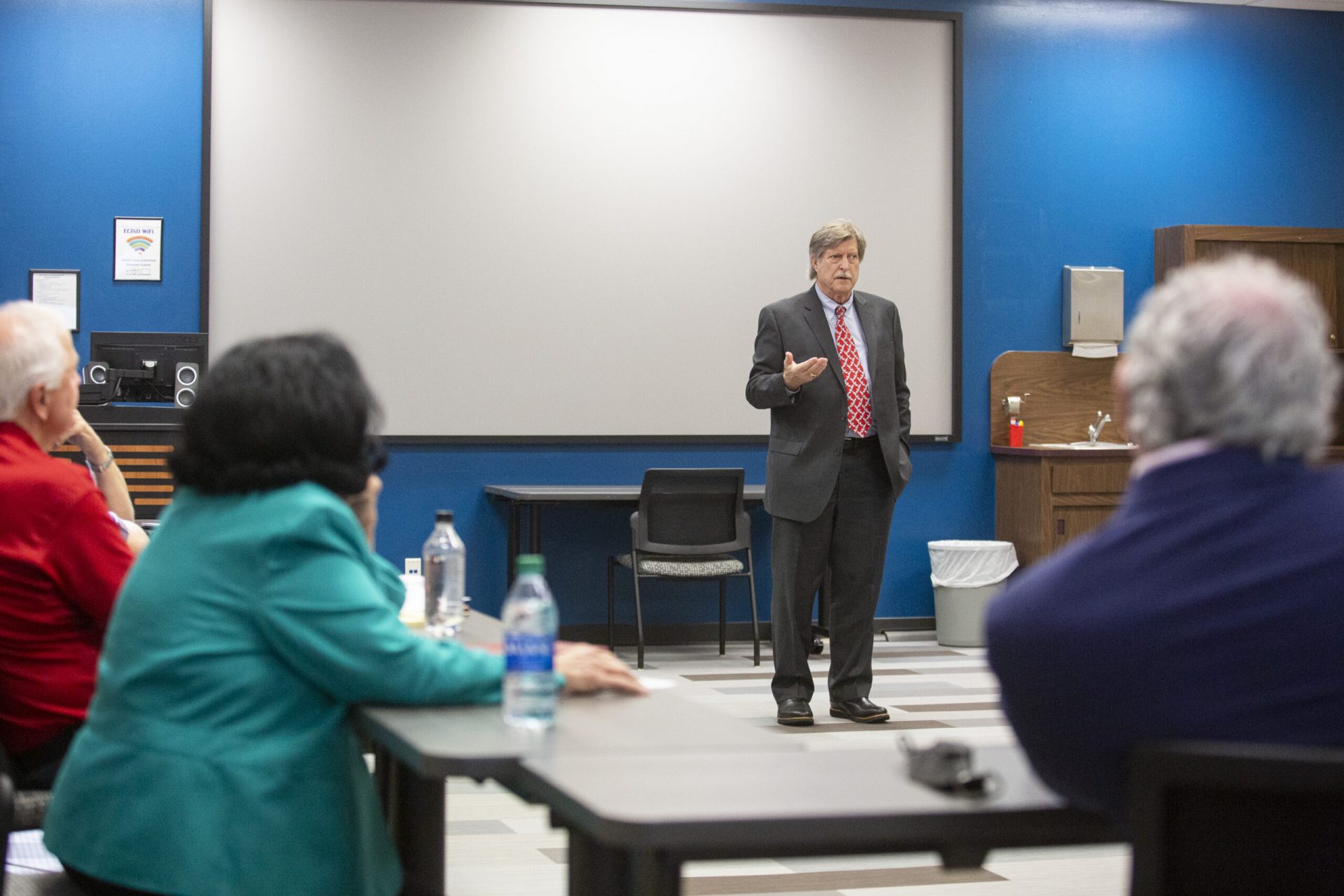The Ector County Redistricting Joint Task Force Committee agreed Wednesday to hire the law firm of Bickerstaff Heath Delgado Acosta LLP to help them through the redistricting process that occurs every decade along with the U.S. Census.
The gathering was held in Conference Room A/B on the third floor of the Ector County ISD administration building and representatives from each entity — the city, county, school district, Odessa College and Ector County Hospital District was present in person or on the phone.
The task force also appointed officers. ECISD Board of Trustees member Delma Abalos was elected chair; vice chair is Odessa City Manager Michael Marrero; and the secretary is Steve Steen, representing the hospital district.
The county has already redrawn its precincts and other entities were either poised to hire the Bickerstaff law firm or agreed to.
Sydney Falk was on hand from Bickerstaff and presented an overview of the process.
Falk said federal law is what drives redistricting.
“The 14th Amendment has been interpreted by the courts that legislative bodies must be of approximately equal population. You don’t have to be perfectly equal,” but the rule of thumb is to get under 10 percent, he said.
“With the 10 percent rule, you define the ideal, or target population, which is the total population divided by the number of districts. So if you had 100,000 in 10 districts, the target idea size would be 10,000,” Falk said.
“Then you look at the districts, most populous and least populous, and suppose that the most populous is 15,000. That’s 5,000 more than the 10,000 ideal size so that’s 50 percent overpopulated and let’s suppose the least populated is 8,000 which is 2,000 less than the ideal size which is 20 percent underpopulated. Then you take the 50 percent and the 20 percent and add them together. That’s 70 percent total deviation from top to bottom. Obviously, they have to redistrict. It’s more than 10 percent so that’s how you calculate those. You do that for all the districts and then take the biggest and the smallest,” Falk said.
There are other rules to pay attention to like the Voting Rights Act, he said, which in part prohibits discrimination against protected minority groups.
“Purposeful discrimination is always illegal,” Falk said.
The Ballotpedia website says Section 2 of the Voting Rights Act of 1965 “mandates that electoral district lines cannot be drawn in such a manner as to ‘improperly dilute minorities’ voting power.”
Falk said Section 2 can be violated by “packing” and “cracking,” but not every instance is necessarily a violation.
“Sometimes in balancing the population, it’s unavoidable. It depends on the distribution and number of the minority population locations. Cracking is where you split a minority group up into more than one district to minimize their voting strength. Packing is the other thing where you could draw two majority-minority districts, but you pack them all into one so that you don’t have to draw the other majority-minority district. Those again, can be violations of Section 2 and you just have to pay attention when you’re doing the drawing that you don’t create a situation that does that,” Falk said.
The task force agreed to finish the redistricting and drawing of district process by July 1 for candidate filing purposes.
The most urgent deadline is the city election in November 2022.
Officials said it costs $4,500 for the assessment of each entity.
The Bickerstaff firm uses Geographic Information System information to help draw the district lines for each entity.
They can overlay demographic information and you can see the population figures change as the lines are moved.
Falk advised the entities to keep their existing precinct structures to the extent they can and not to break up census blocks, which are the smallest census data that is reported.
Falk said public hearings are not required, but Abalos thought it would be a good idea to have one after they’ve gotten a little further along. She said input from the NAACP and LULAC was needed.
It was agreed that the law firm could get most of its boundary information from county and city websites.
The next meeting will likely be in mid-to-late January.

